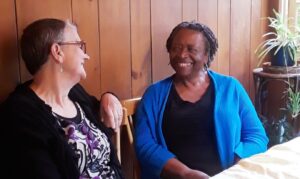Where did that money go and why did it go there

The Paycheck Protection Program provided $800 billion for uncollateralized, low interest loans of up to $10 million to businesses with fewer than 500 employees. These forgivable loans were administered through the private banking system. 94% of eligible firms took advantage of the program.
The PPP was equivalent to the other two major transfer programs enacted in response to the pandemic: $800 billion in stimulus checks and the $680 in Unemployment Compensation.*
The PPP funds flowed to three sets of actors: workers who would have been laid off; creditors and suppliers of PPP-receiving businesses and “windfall transfers” to businesses who would have met their financial obligations absent the PPP.
$510 billion was disbursed in 2020
Up to 77% of 2020 PPP loans went to business owners and shareholders, not to workers’ paychecks. Three quarters of PPP benefits went to the top quintile of households by income.
While 23% -34% of the 2020 disbursement supported jobs that would have been lost, 66%-77% of the money went to owners of business, and corporate shareholders, including creditors and suppliers.
Only $13.2 billion flowed to households in the bottom fifth of income distribution, while 72% flowed to the top fifth of households by income.
Them that’s got, will get
The Congressional Budget Office concluded that the enhanced unemployment and stimulus checks were far more effective at boosting GDP than was the PPP. The authors of this report concur: the PPP was the least effective of the three programs in boosting the macroeconomy.
The PPP preserved only a moderate number of jobs at a high cost per job-year retained and overwhelmingly transferred resources to the highest quintile of households.
The above paragraphs are highlights compiled by Dan Leahy from a January 2022 report by the National Bureau of Economic Research.
*For further analysis of the economy see “We need a worker-led social movement.”

Be First to Comment